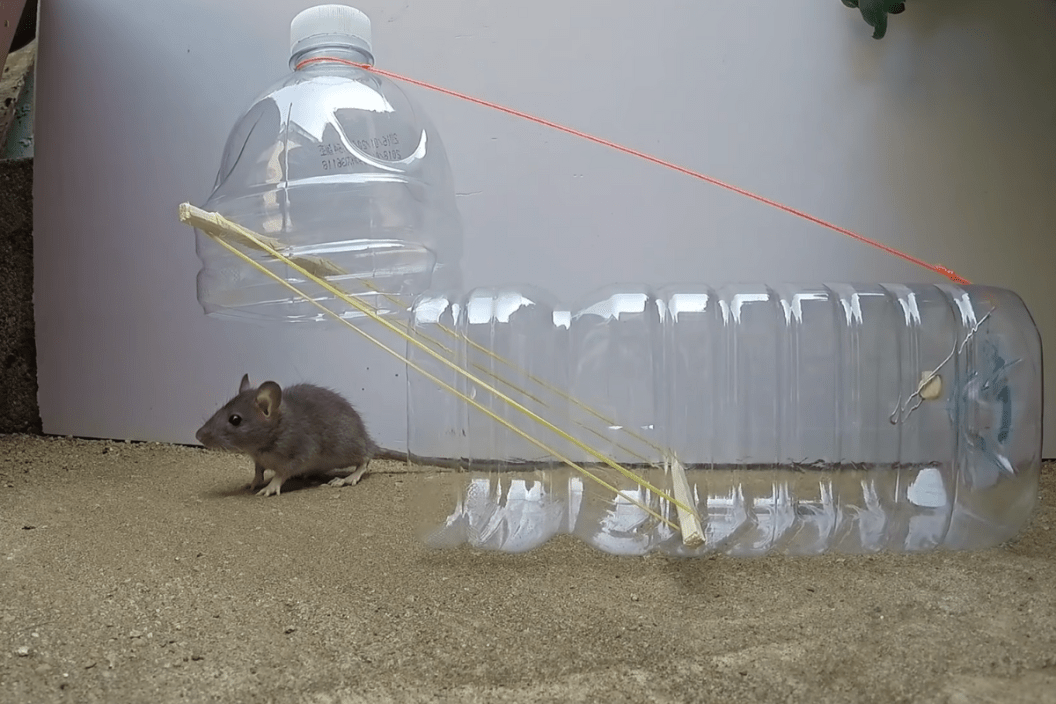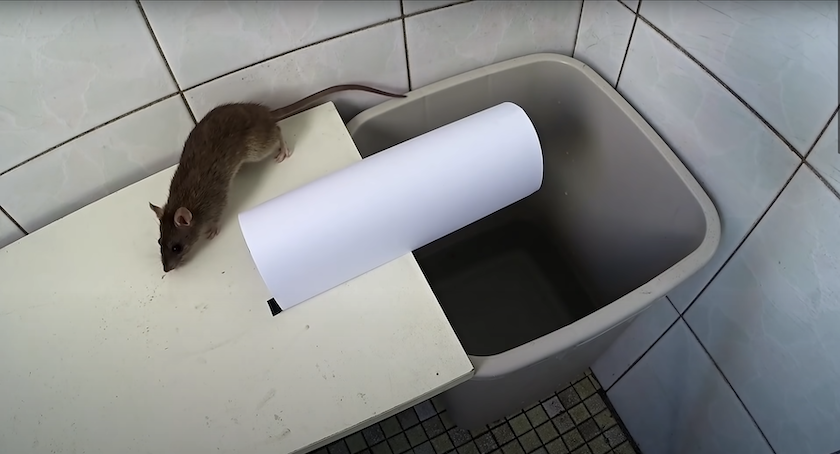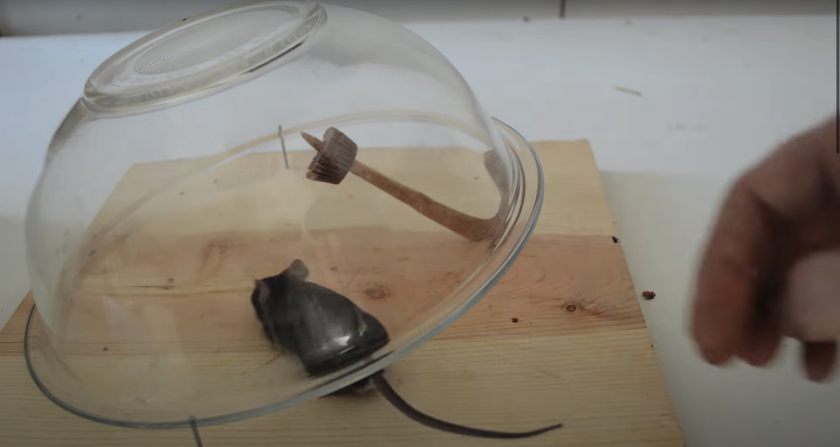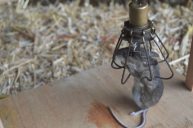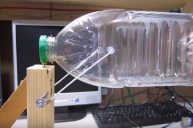We've all seen it happen. The mouse comes out to the DIY mouse trap you strategically placed in the corner where it was forced to walk. It takes a minute to breathe in the fresh aroma from the cheese you placed gently on the trigger switch. Then, it makes its move. You are sweating, your heart races. You don't have any fingernails left. You're reminded of that one time one of the most significant Pope & Young whitetails came into bow range. Only, you're in your kitchen. Suddenly, the mouse reaches out, grabs the cheese, steps off the trap, looks at you, and gives you a wink, then heads on his merry way.
It's happened too often. More times than not, we even find ourselves without a mouse trap while the little critters infest our cellars, attics, garage, cabins, you name it. They waltz in like your crazy aunt and uncle- no heads up, no doorbell. One day you lock eyes with a mouse while you're washing dishes, and it says, "Oh, hey, didn't see you there." The marketplace is full of many different types of humane traps. They all promise to tackle any mouse infestation. But all the glue traps and bait cups in the world really can't stand up to the efficiency and cost-effectiveness of homemade mouse traps. Don't waste your money on state-of-the-art traps when ten minutes and some glue get you the humane results you're looking for.
If you need some pest control, here are a few simple DIY mouse traps you can make out of several items you probably already have around the house.
Spin the Bottle (or Can)
This is one rodent control device I use when I want to conduct a multi-catch effort, and I will not be around for a little while. Many times we would use this at my hunting cabin in the foothills of the Adirondacks when we would leave for the week and return to a bucket full of mice.
How this works is the mouse makes his way up the ramp. Because you put the peanut butter on the can, he is forced to step on the can. Then the top spins, leading the mouse to fall into the bucket. This video fills the bucket with water for the mouse to drown in. If that's too gruesome, leave it empty and ensure the bucket is too deep for the mice to hop out of. Then take the bucket of mice outside and evict them from your premises.
Flip Plate
Again, you need a ramp onto a five-gallon bucket. The mice will make their way up to the bait. We swap out the spinning can for an unbalanced styrofoam plate in this trap. The concept here is like some magician's trick or Looney Tunes thing. Place the bait in the middle of the cardboard top, so the mouse will have to step off the ramp onto the trap to get the tasty meal.
After the mouse crosses the fulcrum or the part of the plate where it will be off balance (ultimately acting as a drop-away door), it will fall into the bucket with no way out. The whole top spins, the mouse disappears, and the entire thing comes to a rest as if nothing just happened. A pretty cool way to catch mice!
Snap-back Trap
This innovative one is my favorite. The video features an empty bottle, more significant than your average 20-ounce soda bottle, and square, like a Fiji water bottle, set up as a rat trap. Now, the video is set up for a rat which explains the reasoning behind the giant bottle, but I can imagine the trap in a smaller version would work just as fine for mice. I've seen videos where mice slither through the small opening of a two-liter Coke bottle.
The concept here may seem complicated, but it is pretty simple. On either side of the trapped door is two rubber bands pulling at the door, which is being held up by the trigger. The trigger is the red twine that runs to the bait at the bottom of the bottle. The bait is set up with a small needle or maybe a toothpick that goes through the hole and is held up by the red band. The rat, or mouse, enters through the trapped door, pulls at the bait, releasing the tension by releasing the line to the door, and the rubber bands pull the door shut, holding so much force as to keep it closed.
I have to admit—it's oddly satisfying watching the mouse's surprise as the trap activates and the bottle flips around. It's humane, so he'll live! But as far as "Man vs. Wild" goes, sometimes it's fun outsmarting wildlife. The only thing to remember here would be to make sure you put the top on the bottle before you set the trap.
Counters Wiped Clean
Anyone can make this trap just about anywhere. This trap is genius if you have mice problems on your countertops or just about anywhere with some height.
You can see that you take an empty toilet paper roll and crease one side, so it fits flat along the edge of a table or countertop. Balancing may be difficult at first, but that's the concept of making this work. Once you find that sweet spot, place some peanut butter or mouse attractant at the end of the tube. The key is to ensure you have a tall enough bucket or bin below where the mouse will fall as it reaches the end of the tube. Simple, cheap, and efficient. My kind of clever mouse trap.
Shoebox trap
While living in Baltimore City, Maryland, I came across this video two years ago. For as young as the kid may be or sound, he made one of the most genius rodent traps that worked great for us at our row home rental. The idea is that the shoe box looks like a shoe box.
You cut a hole out of the top of the shoebox and tape two pieces of paper to form a trap door. We placed a few cracker crumbs on our trapped doors with some peanut butter smeared very lightly to prevent it from weighing the door down, and it worked great.
Take a look at the video, and I'll wait to say it with you when you come back: "Why didn't I think of that?"
Oldie, But a Goodie
When I first found this one, I gave it no mind. I then decided to investigate it a little further. At first, it looks as if there is just a bowl upside down held up by a curved piece of wood. Looking closely, you can see there is bait on the end of the piece of wood.
This DIY mouse trap gets an A+ for simplicity. Although I haven't used it yet, it's obvious it would work and therefore gets the award for operability. The concept is the mouse scurries under the bowl to get the bait while knocking the stick loose, ultimately causing the bowl to fall onto the mouse. You don't end up with a dead mouse, but you've completed a big part of the task.
I do have only one question, however. When it traps the mouse, who is brave and quick enough to reach under and grab the little critter? Uh, wear gloves, ok? Hopefully, each type of trap mentioned here helps address any mouse problem you may have and cut down on the mouse activity from the first night you set traps.
